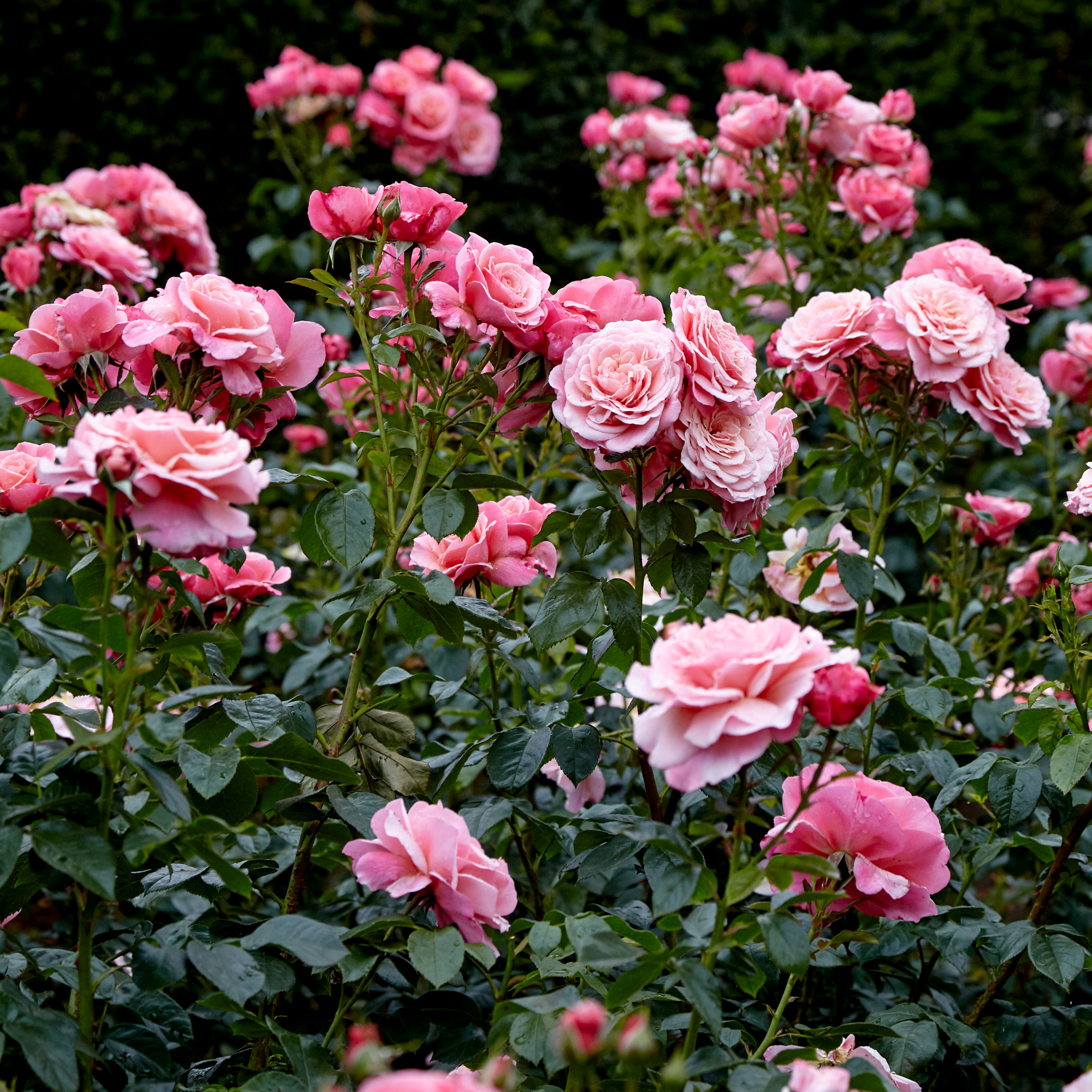7 plants you should never put in pots or raised planters, according to experts
These plants really don’t like confined spaces…


Pots and raised planters can add colour, pattern, and texture to your outdoor space. But you should think twice before filling these containers, as certain plants should never be put in pots or raised planters.
Yes, whether you have a small garden or just love the look of a container garden, utilising pots and raised planters can provide you with more planting space and give you the chance to plant a wider variety of plants. However, one of the biggest container garden mistakes you can make is choosing the wrong plants for the job.
As Morris Hankinson, director of Hopes Grove Nurseries, says, ‘Not all plants are suited to confined spaces like pots or raised planters. Certain plants have specific growth requirements that make them unsuitable for container gardening.’ So, these are the plants you should never put in pots or raised planters.

Morris Hankinson is the founder and managing director of Hopes Grove Nurseries Ltd, the UK’s only specialist grower-retailer of hedging plants. He established the thriving business in 1992, shortly after graduating with a Commercial Horticulture Degree from Writtle College, Essex.
1. Roses

If you’ve always wanted to grow roses and were hoping to add some to your container garden, we have bad news for you. Roses are one of the plants you should never put in pots or raised planters - but it’s important to note that there is a caveat to that.
Although the best small roses can indeed be planted in pots and raised planters, it’s best to steer clear of the larger varieties. In fact, their growth may be stunted, their colours may be dull, and they may even start to suffer from common rose diseases.
Morris says, ‘Larger species and climbing roses require more space for their roots and overall growth. They do better when planted directly in the ground.’ So, focus on growing your roses in your garden borders instead.
2. Tall climbing plants

While there are some climbing plants for pots that you can grow in containers or raised planters, you also need to be careful. After all, pots and planters are already raised above the ground, so you don’t want them growing too tall.
Sign up to our newsletter for style inspiration, real homes, project and garden advice and shopping know-how
Not only will they prove impossible for you to support or prune when they get to extraordinary heights, but this can also affect the health of the plant.
Morris echoes this, saying, ‘Pots and raised planters can’t provide the stability they need to support such large plants, making them prone to tipping over in strong winds or heavy rains.’
This is especially the case with English ivy. Morris says, ‘English ivy can become problematic due to its invasive growth habit. It can quickly outgrow pots and spread to unwanted areas, climbing and potentially damaging structures.’
In fact, that’s why everyone should know how to get ivy off a fence.
3. Russian sage

A lavender lookalike with much larger leaves and extremely delicate flowers, Russian sage can be a welcome addition to your garden - but not if you plan on planting in pots or raised planters.
‘This plant can develop a significant root system and prefers a stable, well-drained environment,’ says Morris. ‘It is best suited for garden beds rather than containers.’
Because of this, it’s best to find a proper home for Russian sage where it can spread out and have its own space. This will ensure that your plant stays happy and healthy for years to come.
4. Perennial herbs

If you have big herb garden ideas, location is key. After all, different herbs have different growing requirements - and many perennial herbs just won’t be suited to pots or raised planters.
That’s because these plants like to spread out and struggle to stay in their lane, meaning they can quickly take over the whole pot or planter and smother any other plants nearby. This is especially true for mint.
Morris says, ‘Mint has a highly invasive root system that spreads rapidly. In a pot, it can quickly outgrow its container and invade other areas. Its roots can also be difficult to control once established.’
Instead, it may be better to plant your herb garden in a raised bed - which is similar to a raised planter without the base. This means that it’s built right on top of your garden soil, without a barrier in between the soil and the compost you fill it with.
5. Wisteria

Synonymous with Bridgerton and regency-style homes, wisteria can instantly upgrade your garden and even boost the value of your property. And while there are many positives to growing wisteria, there are also some downsides.
You can technically grow wisteria in pots or raised planters, but if you want to truly reap the rewards of this stunning climber, you probably shouldn’t. They not only need more space, but they also need way more support than a pot or planter could give them.
Morris echoes this, saying, ‘Wisteria is a vigorous climber with an extensive root system that can easily outgrow a container. It needs substantial support and space to thrive.’
6. Bamboo

In theory, bamboo can act as one of the best natural privacy screens to protect your garden from prying eyes. And while this exotic plant is quirky to look at, experts have warned homeowners against planting bamboo in their gardens at all.
‘Bamboo is known for its aggressive, fast-spreading root system. In a container, bamboo can quickly become root-bound, and its roots can escape through drainage holes, potentially causing damage and spreading uncontrollably,’ explains Morris.
In fact, one family found that out for themselves when bamboo spread into their home and caused over £100K worth of damage.
And while bamboo can be grown in a pot if you really, really want it in your garden, it’s essential that you take steps to prevent bamboo from spreading.
7. Vegetables

We’d like to start by saying that you can grow some vegetables in pots and raised planters. But certain vegetables should never be put in pots or raised planters - so it’s worth taking note if you’re looking to grow your own fruit and vegetables.
‘Certain vegetables, such as carrots, parsnips, and other root crops, require a significant depth of soil to develop their roots properly,’ warns Morris. ‘Shallow pots or raised planters aren’t ideal for these plants because they need ample vertical space to grow their long taproots. They can become stunted and fail to reach their full potential.’
Because of this, it’s best to grow vegetables in raised beds or in-ground. You can still grow tomatoes in pots, though.
FAQs
What is the difference between a planter and a raised bed?
A raised planter is essentially a large container or pot (typically rectangular in shape, but this can vary) that has been raised off the ground with legs - or separated from the ground by a base. This means that it is completely cut off from the ground beneath it.
A raised bed, on the other hand, is an extension of the ground. It’s formed of four sides, with no base. It’s often built directly on top of the soil in a garden and then filled with organic matter such as compost, food waste, leaves, and mulch.
Typically, this means that raised beds have better-quality, free-draining soil than planters.
What plants can you put in raised beds?
Although there are many plants that you should never put in pots or raised planters, there are many that you can put in raised beds instead. This includes:
- Salvia: like these salvia plants from Dobies.
- Dahlias: like these dahlias from Thompson & Morgan.
- Geraniums: like these geraniums from Suttons.
- Lavender: like these lavender shrubs from B&Q.
- Petunias: like these petunias from Crocus.
- Marigolds: like these marigold plants from Amazon.
- Zinnias: like these zinnias from Sarah Raven.
Well, there you have it. These are the plants you should never put in pots or raised planters.

Lauren Bradbury has been the Content Editor for the House Manual section since January 2025 but worked with the team as a freelancer for a year and a half before that. She graduated with a Bachelor’s degree in English and Creative Writing from the University of Chichester in 2016. Then, she dipped her toe into the world of content writing, primarily focusing on home content. After years of agency work, she decided to take the plunge and become a full-time freelancer for online publications, including Real Homes and Ideal Home, before taking on this permanent role. Now, she spends her days searching for the best decluttering and cleaning hacks and creating handy how-to guides for homeowners and renters alike, as well as testing vacuums as part of her role as the Ideal Home Certified Expert in Training on Vacuums, having spent over 110 hours testing different vacuum models to date!